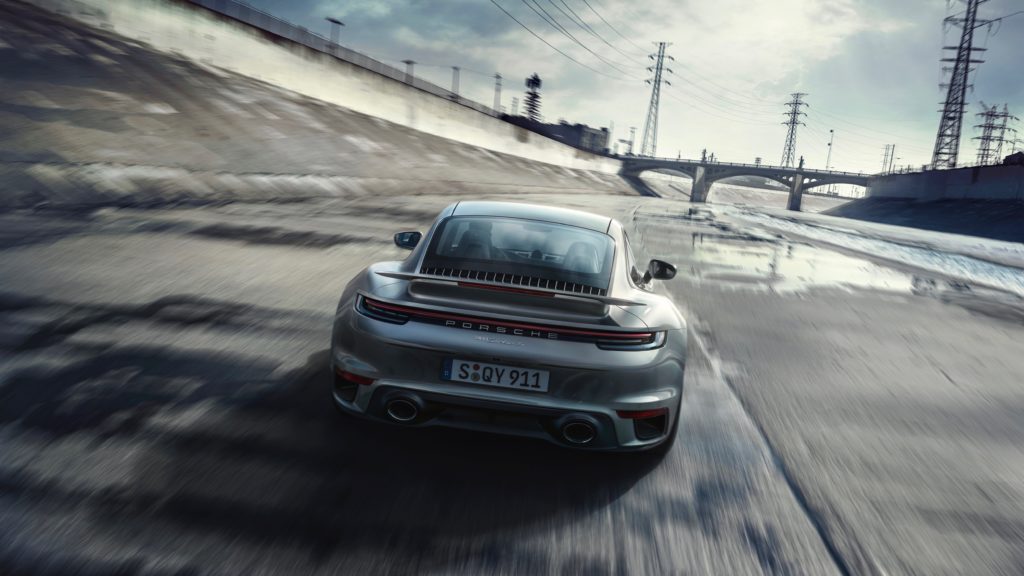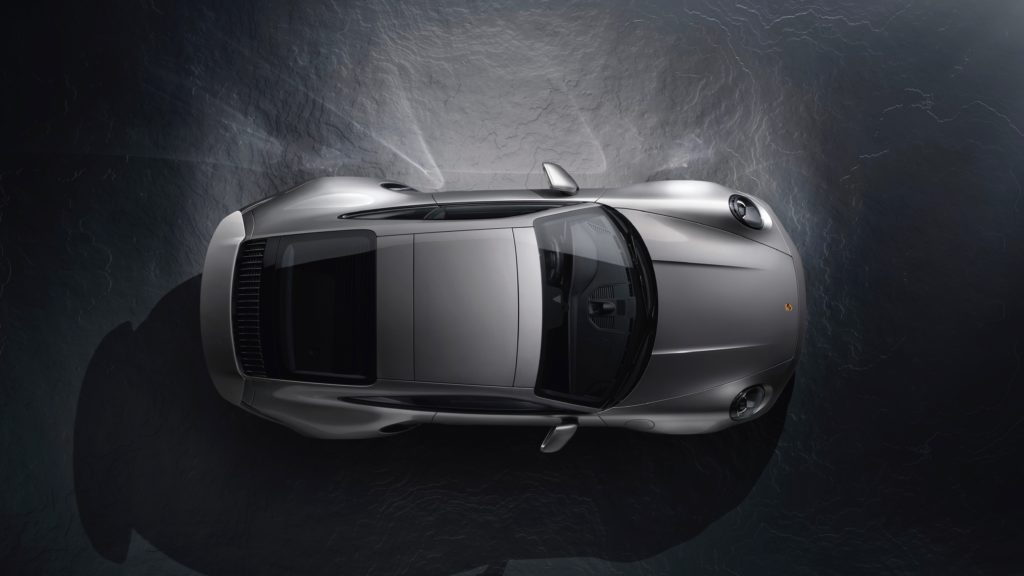
03/03/2020
Porsche presents the new-generation 911 Turbo S for unprecedented power, driving dynamics and comfort. The new range-topping 911 is being launched as a Coupé and Cabriolet.
The new 911 Turbo S is powered by a new 3.8-litre boxer engine with two VTG turbochargers, which delivers 478 kW (650 PS; 911 Turbo S Coupé: Combined fuel consumption 11.1 l/100 km; combined CO2 emissions 254 g/km, 911 Turbo S Cabriolet: Combined fuel consumption 11.3 l/100 km; combined CO2emissions 257 g/km), 51 kW (70 PS) more than its predecessor. Maximum torque is now 800 newton metres (an increase of 50 Nm). The Turbo-specific eight-speed Porsche Doppelkupplung (PDK) cuts the sprint from zero to 100 km/h to 2.7 seconds (0.2 seconds faster), while top speed is unchanged at 330 km/h.

The dimensions of the 911 Turbo S have been increased significantly in line with the enhanced driving dynamics: the body is now 45 millimetres wider above the front axle (1,840 mm), and the overall width is 1,900 mm above the rear axle (an increase of 20 mm). Modified track widths, further developed aerodynamics and the new mixed-size tyres contribute to its agility and sportiness: the track is now 42 mm wider at the front axle and 10 mm wider at the rear axle. The adaptive aerodynamics now include controlled cooling air flaps at the front, while the larger rear wing has been designed for even more downforce. For the first time, the 911 Turbo S transfers its power to the road with mixed tyres in two different sizes: it has 20-inch tyres with their unique 255/35 dimensions at the front and 21-inch 315/30 tyres at the rear. New equipment options underline the much sportier image of the all-wheel drive 911. These include the Porsche Active Suspension Management (PASM) sports chassis that has been lowered by 10 mm and the sports exhaust system with adjustable flaps that guarantees a distinctive sound.
The new 911 Turbo S Coupé













The completely new engine of the 911 Turbo S is based on the 911 Carrera engine generation. It features a completely redesigned charge air cooling system; new, larger VTG turbochargers in a symmetrical layout with electrically adjustable wastegate flaps, as well as the use of piezo injectors, which have significantly improved the vehicle’s characteristics with regard to responsiveness, power, torque, emissions and revving ability.
The new six-cylinder engine is aspirated by a new intake system. In this instance, the previous routing of process air and charge air cooling was swapped around: part of the process air now flows through the characteristic Turbo air intakes in the rear side sections. In front of the air filters, now situated in the rear wings, two other airflows have also been incorporated, through the rear lid grille. This means the new 911 Turbo S has four intakes with a larger overall cross-section and lower resistance, helping to improve engine efficiency. Two symmetrical turbochargers with variable turbine geometry (VTG) and larger dimensions replace the previous identical parts. The wheels now rotate in opposite directions on the right and left sides of the vehicle. The diameter of the turbine wheels has been increased by five millimetres to 55 mm, while the 61 mm compressor wheel is now three millimetres larger. The wastegate flaps are electrically controlled with stepper motors.
The new 911 Turbo S Cabriolet






The harmonious design, which perfectly balances driving pleasure, dynamics and sportiness, is ideally suited for everyday use as well as the race track. The leap in performance of this new generation is particularly noticeable in the sprint from zero to 200 km/h: at 8.9 seconds, the new 911 Turbo S is one full second quicker than its predecessor. Thanks to the enhanced Porsche Traction Management (PTM) all-wheel drive, the transfer case can distribute significantly more torque, with up to 500 Nm being transferred to the front wheels. The new generation of the standard PASM chassis is also even sportier. Faster and more precisely controlled dampers provide significant advantages to the driving dynamics with respect to roll stability, road holding, steering behaviour and cornering speeds.
The new front end with wider air intakes has a characteristic Turbo-look with dual front light modules as well as standard LED matrix headlights with dark inserts. The redesigned, pneumatically extendable front spoiler and the larger rear wing deliver 15 per cent more downforce. The muscular rear wing sections with integrated air intakes emphasise the sleek body of the 911 Turbo S. The new look of the rear is completed by rectangular tailpipes in high-gloss Black, typical of the Turbo.
The interior of the new 911 Turbo S Cabriolet




The interior has a high-quality and sporty finish. The standard equipment list includes a full leather interior and carbon trim in combination with Light Silver accents. A newly designed two-tone interior will be available by Porsche Exclusive Manufaktur as an option. This is characterised by a coordinated interplay of colours, materials and individual enhancements. The 18-way adjustable sports seats feature stitching that pays homage to the first 911 Turbo (type 930). High-quality graphic elements and logos in the instrument cluster complete the characteristic Turbo S features. The centre screen of the PCM is now 10.9 inches, and can be operated quickly and without distraction thanks to its new layout. Other features on board ex-works are the GT sports steering wheel, the Sport Chrono package with newly integrated Porsche Track Precision app and BOSE® Surround Sound system.
Published from newsroom.porsche.com
